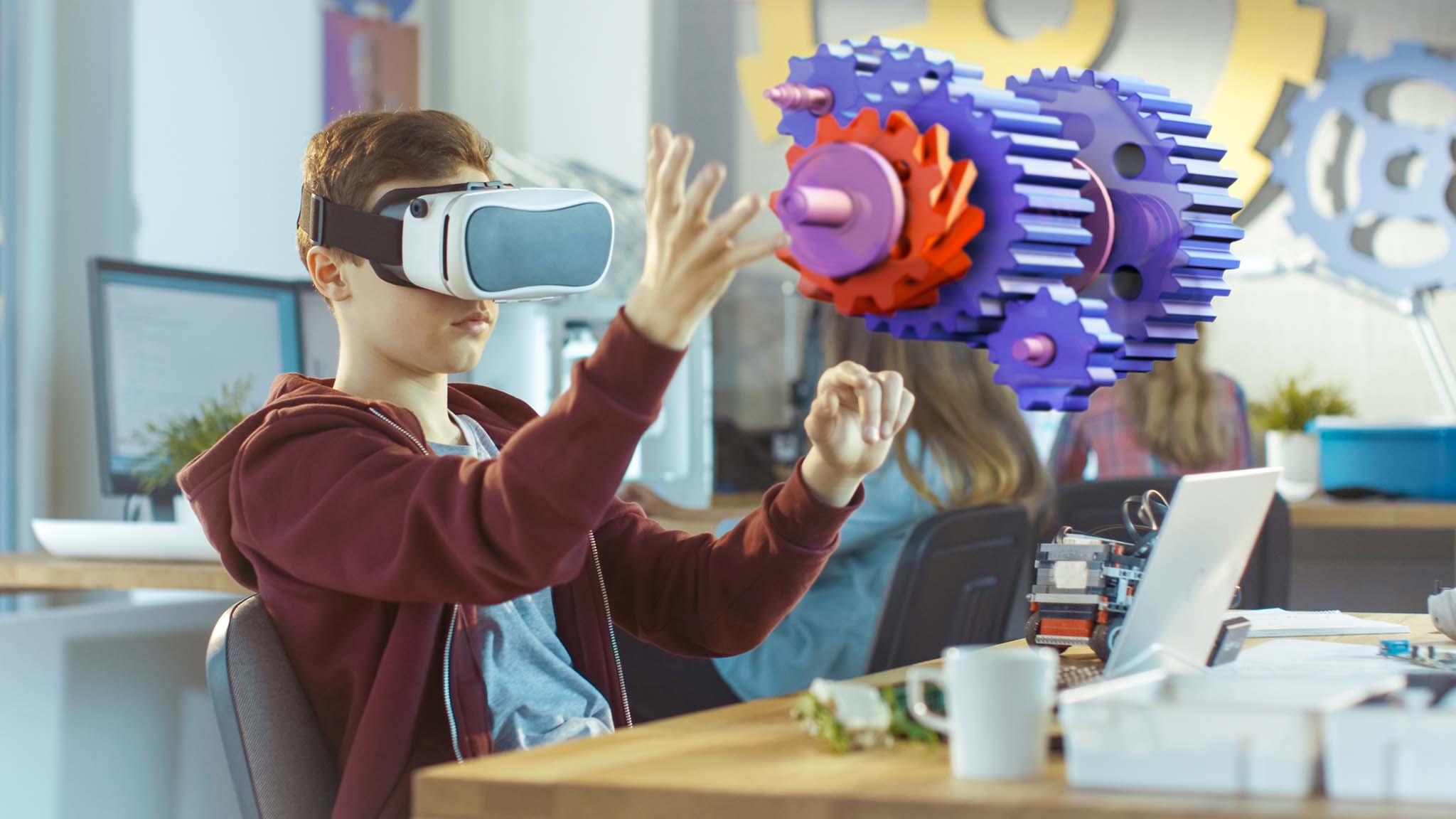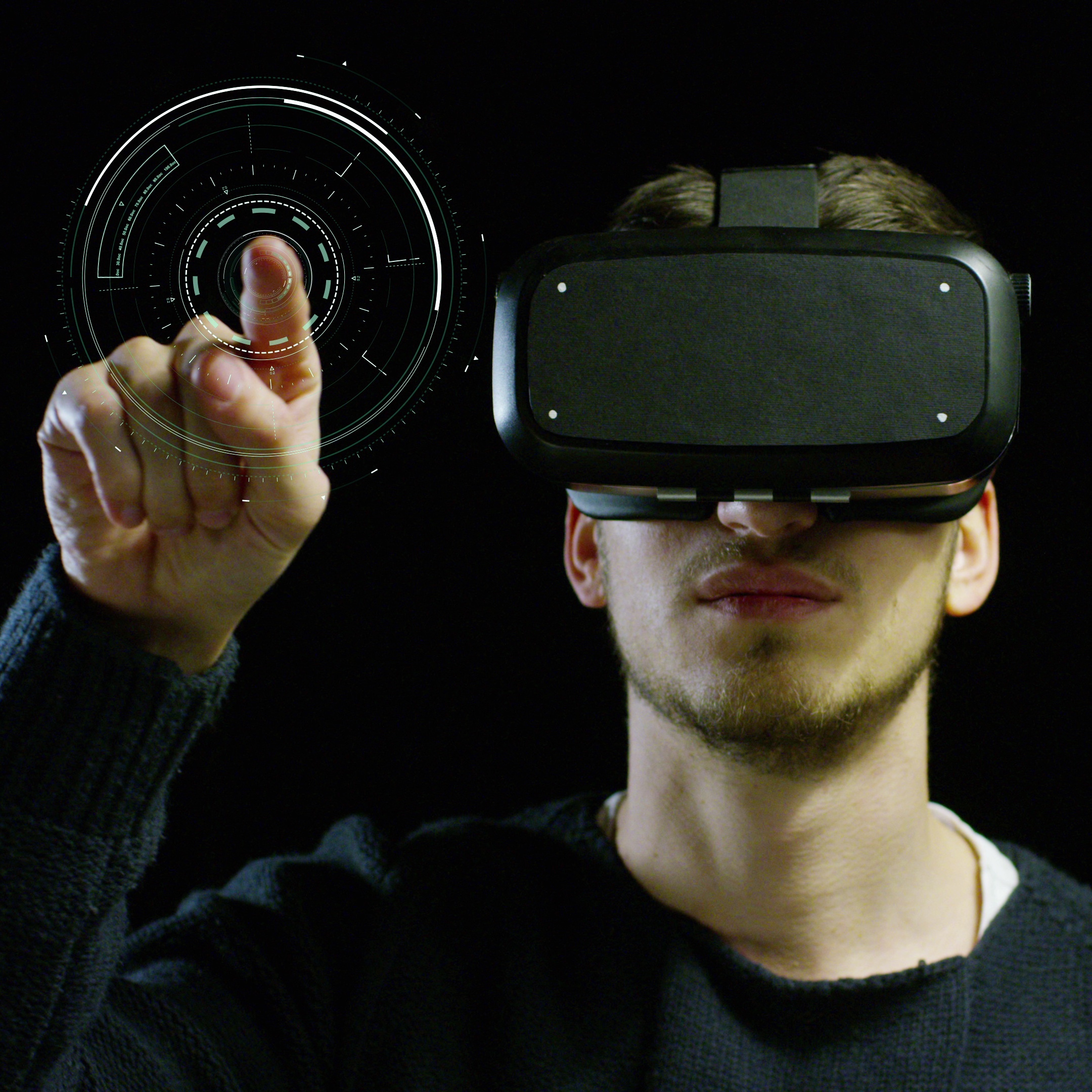Extended Reality (XR): The Next Big Thing in Education
Imagine a classroom where students can dive deep into the heart of ancient civilizations, explore the vastness of space, or even dissect a virtual frog—all without leaving their seats. Welcome to the world of Extended Reality (XR), a transformative technology that’s reshaping the educational landscape.
Comprising Augmented Reality (AR), Virtual Reality (VR), and Mixed Reality (MR), XR offers a unified platform that transcends the boundaries of traditional learning. By 2035, the global XR market is projected to soar to a staggering USD 1,246.57 Billion, growing at a CAGR of 24.2%. This surge underscores the increasing integration of XR in various sectors, with education at the forefront.
But why is XR garnering such attention in the educational realm? At its core, XR offers an unparalleled immersive experience. It bridges the gap between theoretical knowledge and practical understanding, allowing students to interact with and visualize complex concepts in real-time. XR in K-12 education extends beyond our physical reality, offering a rich, interactive canvas for learners to explore, engage, and enrich their knowledge.
As we stand at the cusp of a new era in education, the integration of XR promises a future where learning is not just confined to textbooks but is a dynamic, interactive journey. Dive in with us as we explore the myriad facets of XR and its transformative impact on K-12 education.
Decoding Extended Reality: The Future of Learning
At the intersection of technology and pedagogy lies Extended Reality (XR), a dynamic blend of Augmented Reality (AR), Virtual Reality (VR), and Mixed Reality (MR). Each component of XR offers distinct capabilities: AR overlays digital information on the real world, VR immerses users in entirely simulated environments, and MR merges both real and virtual elements.
However, there’s a nuance in the current trajectory of XR’s classroom integration. As highlighted by Di Natale et al. (2020), much of today’s XR in K-12 educational content is pre-designed, positioning students as mere consumers. They engage with ready-made experiences rather than crafting their own. This approach, while beneficial, might only partially harness the potential of XR. When students transition from passive consumers to active creators within Extended Reality in education platforms, they deepen their understanding of subjects and develop critical digital skills.
While XR is undeniably reshaping educational landscapes, its true potential will be realized when students are empowered to be at the helm of their own immersive learning experiences.
The Impact of XR on Learning and Teaching
As we navigate this evolving educational landscape, it’s essential to understand both the challenges and the immense potential XR brings.
Navigating the Challenges
The initial journey of XR in K-12 education realm wasn’t without its roadblocks. High costs associated with developing XR tools and software posed significant barriers. Moreover, its early applications were often narrowly focused, catering to specific learning outcomes in specialized fields, such as medical education. However, the horizon has expanded with technological advancements, particularly the emergence of affordable mobile XR solutions. Schools and institutions now find it increasingly feasible to integrate XR into their curricula, thanks to more accessible and user-friendly tools.
Unlocking the Potential of XR in Education
Elevating Engagement Levels: Extended Reality in education offers an immersive learning environment, making lessons informative and deeply engaging. The interactive nature of XR ensures that students are not merely passive recipients but active participants in their learning journey.
Boosting Retention and Comprehension: Traditional teaching methods have their merits, but XR brings a game-changing advantage. Studies indicate that XR can boost retention rates to an impressive 75%, a stark contrast to the 10% and 5% retention rates observed with reading and lectures, respectively.
Experiential Learning and Practical Training: XR’s potential shines brightly in experiential learning. Referred to as “serious games” in some circles, XR-driven educational games make learning more student-centric, captivating, and compelling.
Visualizing the Abstract: Complex concepts can be challenging to grasp, especially in subjects like quantum physics or advanced mathematics. XR in K-12 education serves as a bridge, turning abstract theories into tangible, interactive experiences, aiding in comprehension.
Promoting Collaboration and Social Learning: Far from being an isolating experience, XR fosters collaborative learning. Students can work together in virtual environments, embarking on joint projects or exploring simulations as a team.
Personalized Learning Pathways: Every student has unique learning preferences and paces. Extended Reality in education recognizes this diversity, offering tailored learning experiences that cater to varied learning styles, ensuring every student finds a pathway that resonates with them.
XR in Action: Real-World Applications in Education
As technology advances, educators worldwide are leveraging XR to create immersive learning environments, transcending traditional teaching methods and offering students a more holistic, contextual understanding of subjects. Let’s take a look at some of the pioneering institutions and their use of XR in K-12 education –
-
- ● Stanford University’s Virtual Human Interaction Lab: Stanford, a beacon of innovation, has its Virtual Human Interaction Lab dedicated to understanding the dynamics of interactions within virtual spaces. Their research provides a foundation for how students can best engage with XR-driven educational content, from understanding ancient civilizations to exploring marine biology.
- ● EON Reality’s Classroom 3.0 Program: Collaborating with global schools, EON Reality emphasizes creating XR modules tailored to K-12 education. Their diverse range of content, from intricate biology lessons to immersive history experiences, exemplifies XR’s expansive educational potential.
Diverse Applications Across Subjects
-
- ● Science: XR transforms abstract scientific concepts into tangible experiences. Students, for instance, can delve into the cellular world, witnessing processes like photosynthesis in real time. They can explore the universe, visit planets, and understand cosmic phenomena.
-
- ● Mathematics: Complex topics like geometry become more intuitive with Extended Reality in education. Students can interact with 3D shapes, gain a deeper understanding of spatial relationships, and even tackle advanced topics like calculus more visually and interactively.
-
- ● History: Historical education is enriched when students can virtually traverse epochs. Platforms like TimeLooper allow students to experience significant moments, from ancient battles to pivotal speeches, making the past come alive in a way textbooks can’t achieve.
- ● Arts: XR in K-12 education offers art students a unique blend of tradition and innovation. They can virtually visit museums like the Louvre or engage in interactive digital art creation, understanding the evolution of art forms and techniques.
Beyond the Traditional Classroom
-
- ● Virtual Field Trips: XR breaks down geographical barriers, enabling students to explore global locations. Whether it’s a journey through the Amazon rainforest, exploring ancient ruins, or diving into the ocean’s depths, the world becomes a classroom, enriching students’ perspectives.
-
- ● Lab Simulations: Virtual labs, like those offered by Labster, allow students to conduct experiments without the constraints of physical equipment or safety concerns. They can explore, make mistakes, and learn in a risk-free environment.
- ● Vocational Training: XR’s role in vocational training is pivotal. Medical students, for instance, can utilize platforms like Osso VR to practice surgeries, ensuring they’re well-prepared for real-world operations. Similarly, engineering students can visualize complex machinery, and architecture students can walk through their designs.
Closing Thoughts: Embracing the XR Revolution in Education
Emerging technologies, especially 5G, are set to be game-changers. The reduced latency and enhanced data speeds of 5G will supercharge XR experiences, making real-time collaborations and immersive learning the norm rather than the exception. This technological leap will undoubtedly accelerate the adoption of XR in K-12 educational settings, making learning without boundaries a tangible reality.
However, the path to this future has its challenges. The initial costs associated with Extended Reality in education tools and software development have been significant barriers. But as Quintana, 2022 points out, as XR hardware and software become more prevalent, there’s a palpable increase in interest and readiness to weave XR into the fabric of teaching and learning.
Looking ahead, the prospects of XR in education are vast. Ongoing research continually unveils new methodologies and applications, while innovations on the horizon promise to make XR even more integral to education. From virtual labs to global classrooms, the potential applications are boundless.
In conclusion, the journey of XR in education is not merely a technological advancement; it’s a paradigm shift in how we perceive, understand, and engage with education.



